Movies often portray non-existent or futuristic technologies, a typical one being the injectable GPS tracker.
It doesn’t mean that we don’t have injectable chips the size of a grain of rice.
They exist. But they use slightly different technologies to transmit user data.
We will explain whether an injectable GPS tracker exists and their difference compared to implantable chips. Read on to learn more!
Table of Contents
- Do Injectable GPS Trackers Exist?
- Differences Between Injectable GPS Trackers and Microchip Implants
- Why Don’t Injectable GPS Trackers Exist?
- Should I Use a GPS Tracker or Implantable Chip?
- Applications of Implantable Chips
- Concerns About The Future of Injectable/Implantable Chips
- Conclusion
Do Injectable GPS Trackers Exist?
No. The 2006 James Bond film Casino Royale played with the idea of an injectable GPS tracker. The chip allowed the agent’s superiors to track his location and movement from anywhere globally.
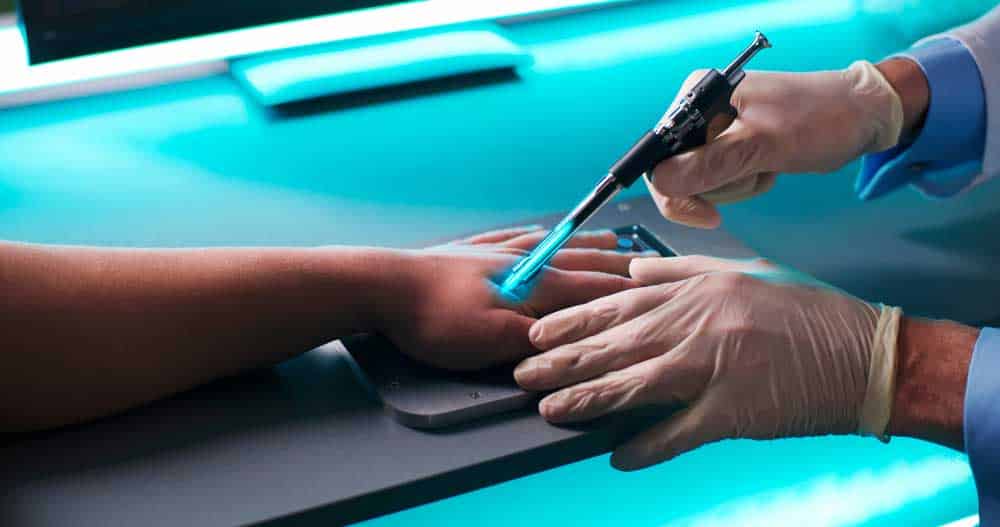
A patient getting an RFID microchip implant
While it seems revolutionary to have implantable chips for humans and pets to monitor them from anywhere, this tracking mechanism was only a concept.
The idea conflated two technologies, which are microchip implants and GPS trackers. They might appear the same, but the technologies are different.
Differences Between Injectable GPS Trackers and Microchip Implants
GPS Trackers
GPS trackers feature GPS receivers for receiving location data from GPS satellites. So they cannot transmit data without getting input. They get data from satellites, then calculate their position.

A cat with a GPS tracker
But GPS can be either of two types. Data loggers record the computed location data on board a memory chip or module, which you can download from the card/device later. So you need to access the device at the end of a certain period to download the data for analysis.
On the other hand, beacons connect to a data network, then transmit the location data via SMS, Wi-Fi, or cellular network to a server.
Microchip Implants
Microchip implants come either as brain, dental, or skin implants. Skin implants come in two types. Dermal implants stick to the skin as invisible transdermal patches, while subdermal implants get injected under the skin. The film described earlier purported the GPS tracker could function as a sub-dermal injectable microchip.

A veterinarian microchipping a puppy
The most typical microchip implant is the PIT (Passive Integrated Transponder). It implements RFID (Radio Frequency Identification) technology to broadcast pet and wildlife identification information without requiring any power source. You can even use it in the human body.
These tags are tiny (the size of a grain of rice) and have a glass body with an internal circuit that activates when an antenna passes nearby.
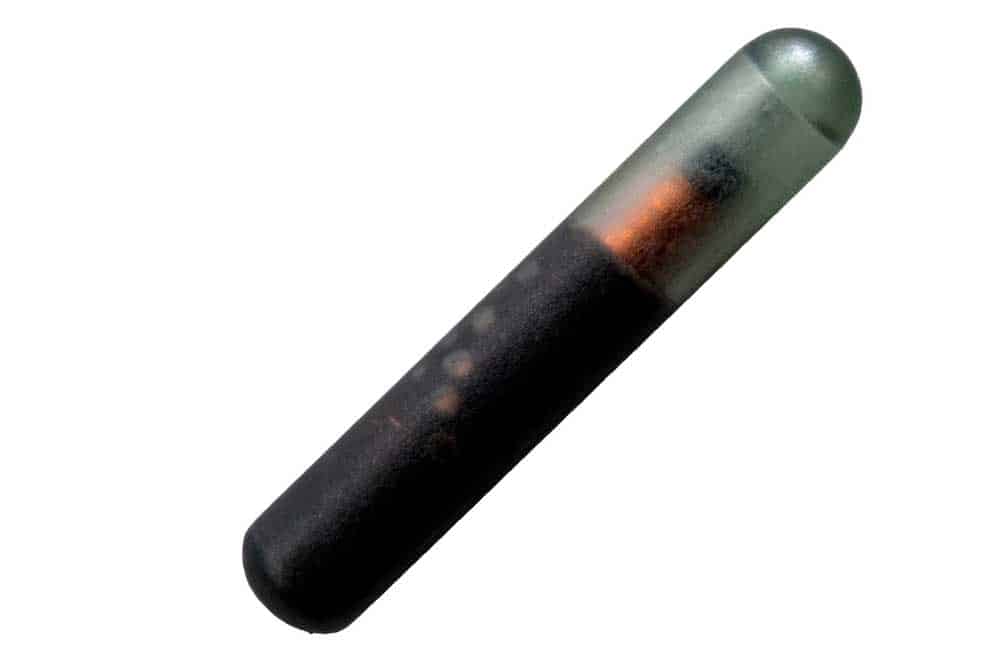
A PIT tag (RFID microchip)
Inside the glass tube, a power coil gets activated by the antenna’s electromagnetic field, which then excites the transponder coil and provides enough power to run the circuit. The transponder then emits an identification signal to respond to the interrogating received signal.
This antenna/scanner connects to a computer to record the ID of the tag and the time it passes by the chip.
Why Don’t Injectable GPS Trackers Exist?
Injectable GPS trackers don’t exist because of two reasons.
Large Size
As you can see, microchip implants have a simpler design than GPS trackers. They don’t need power sources, antennas, receivers, or transmitters.
A lack of these features makes them tiny and easy to inject or surgically insert into the body. Most measure 11mm long and 2mm wide, with a glass enclosure to protect all the electronics from blood.
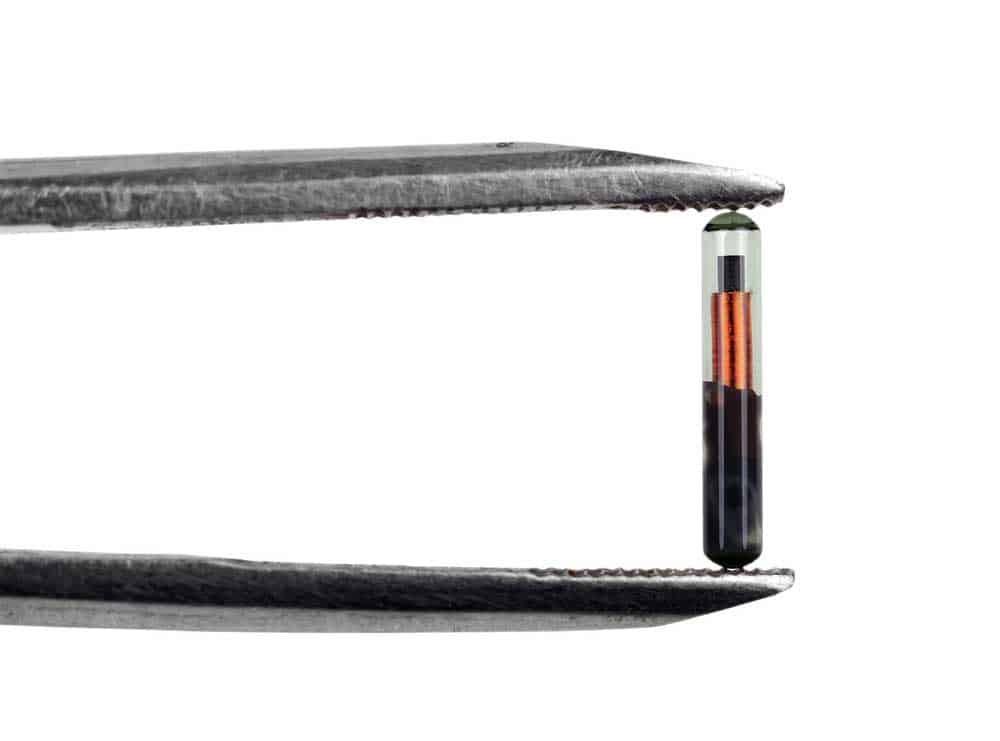
A PIT tag with a glass enclosure
However, GPS trackers must have batteries, receivers, antennas, and transmitters in some cases. So these devices are not small enough to inject or surgically insert into the body. It would be like fitting a watch under your skin, which would be painful, uncomfortable, and unsafe.
Therefore, GPS trackers are usually in the form of wearables or get carried outside the body.

A dog with a yellow GPS tracker
Battery Life
GPS trackers have several hardware components, each larger than the implantable chip. They include the following.
- GPS antenna
- GSM module
- Loudspeaker
- LED light
Besides adding to the device’s size, these components require a power source, and battery size directly determines the device’s battery life. So manufacturers try to fit larger batteries to give the tracker a long run time, making the power source the most sizable component in a tracker.
But even if they use a tiny battery, it will require recharging after some time. You can’t insert a USB charging cable into your skin.

A cat with a GPS tracker
Also, there is the safety factor. Lithium-ion batteries, and other battery types in general, contain harmful chemicals that might cause health risks if inserted as an implant for dogs, cats, wildlife, and humans. Leaks and explosions can be fatal.
But microchips are less complex implants that don’t require batteries. So they are safer, compact, and don’t require charging.
Should I Use a GPS Tracker or Implantable Chip?
We recommend using both for pets because they have different applications. If your cat or dog runs away, a GPS collar will help you locate and retrieve your pet quickly.
The collar can break off, and your four-legged friend might end up in the hands of strangers. In such a case, the microchip implant can help with identification when taken to a vet.
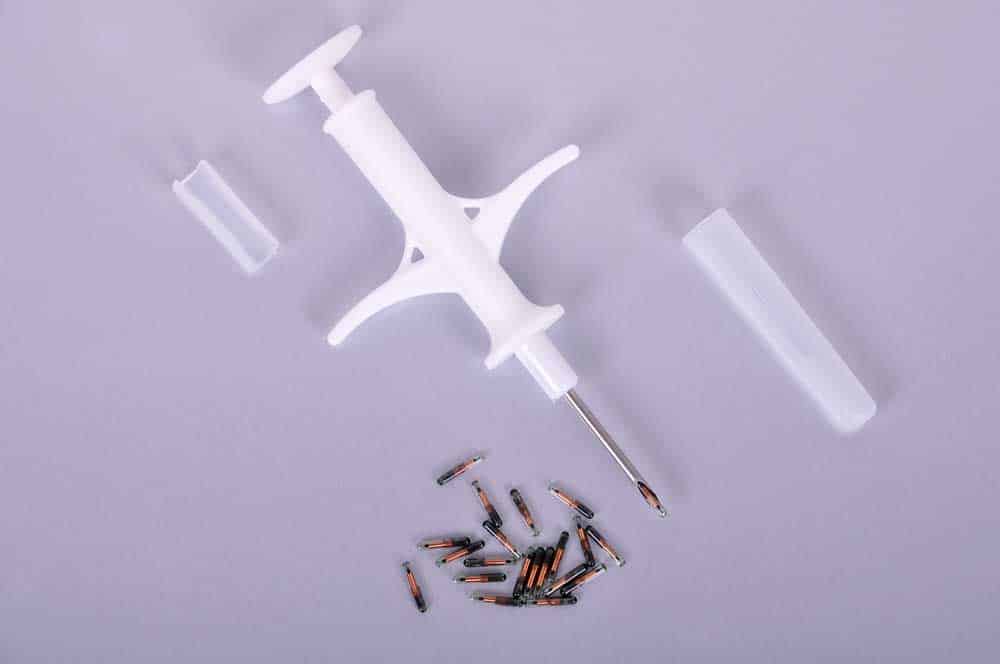
A syringe for inserting PIT tags in pets
Applications of Implantable Chips
Besides providing a digital identity, you can use implantable chips for the following applications.
- Medical records
- Cryptocurrency wallet
- Medical identification
- Medical records
- Travel cards
- Payment cards
- Keycards
- Security (building access control)
Concerns About The Future of Injectable/Implantable Chips
Most people are aware of implantable chips in the context of pets and wildlife. But what if a human chip implant wave arises?
Religions like Christianity have linked implants and the mark of the beast described in the Bible, saying governments will require you to have one to buy or sell anything in the future.
But we are not here to talk about religion.
What causes more worry is the possible abuse of this technology. The chips can erode civil liberties if adopted by governments as a compulsory identification program.
Also, they can have security implications, such as an increase in identity theft cases. Malicious people can hack the device or database for identity verification to steal user data.
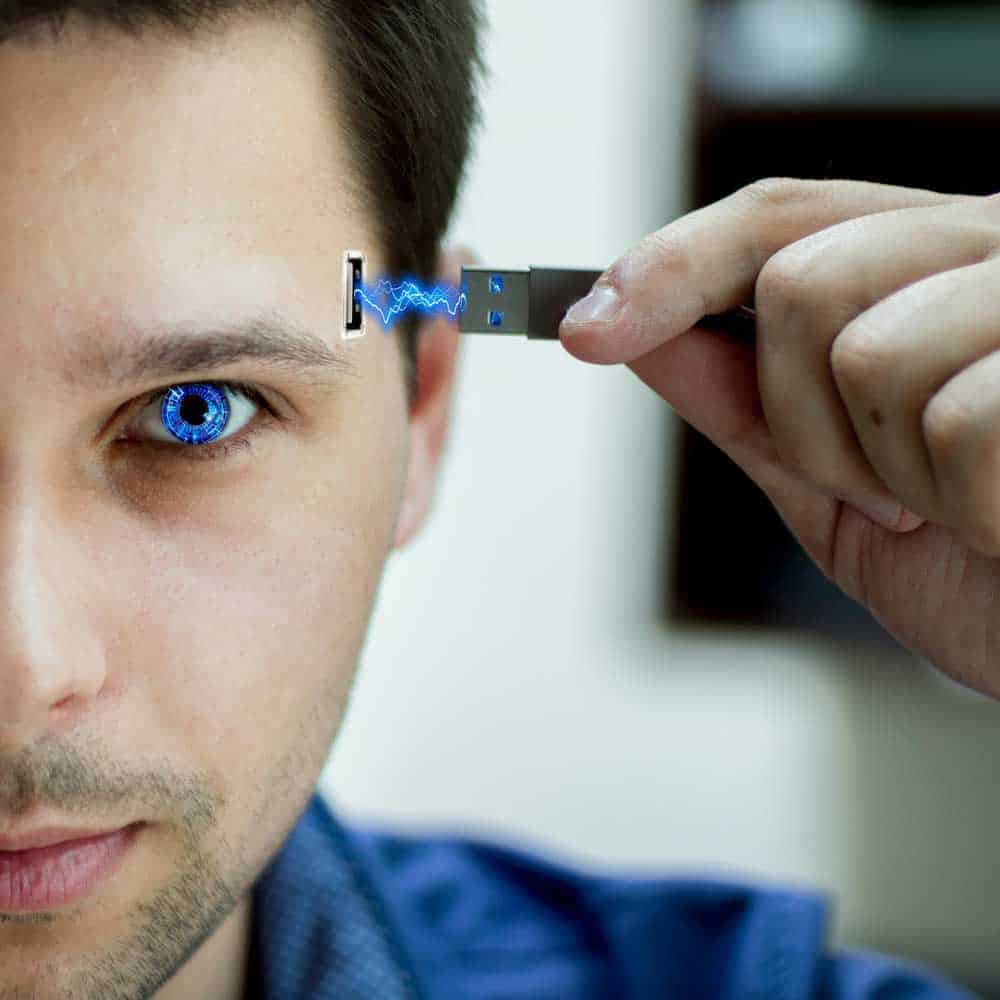
A concept of the futuristic man with digital eyes and a USB input
Some claim the chips increase cancer risk, but this area needs more research to determine the authenticity of the claims.
Other concerns include the following.
- Infections
- Corrosion
- MRI risks
Conclusion
Injectable GPS trackers are not feasible technically using current technologies. However, they might be available soon as technology makes devices tinier to help locate pets, wildlife, and humans.
Although there are concerns about illegal tracking by governments and other privacy-eroding factors, the technology will have several benefits.
It will give the location (latitude & longitude), velocity, and altitude while hidden under the skin, making kidnapping or missing person cases easy to solve.
That’s it for this article. Leave a comment below to let us know your thoughts about the technology.
